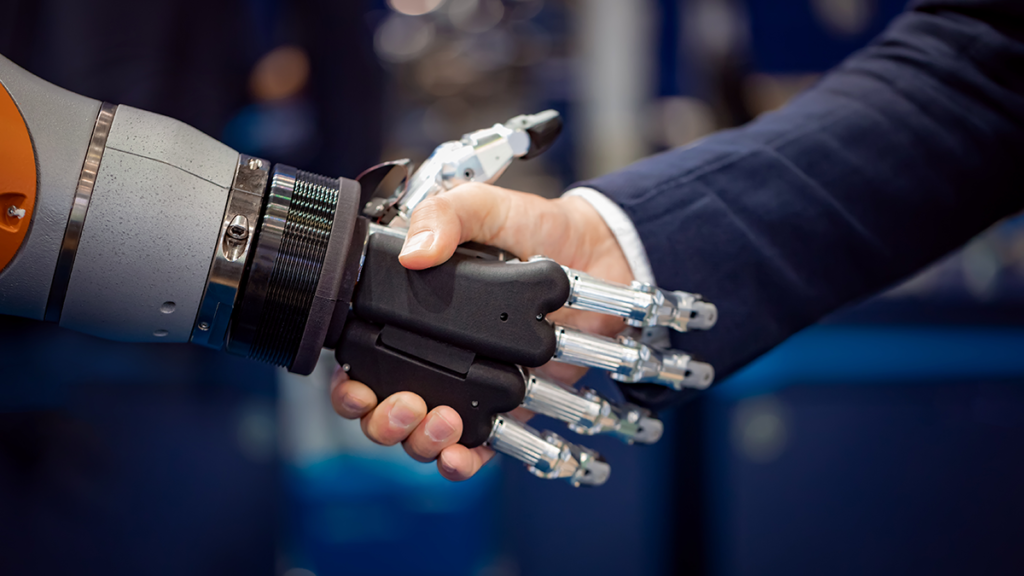According to a recent study from market research firm Graphical Research, the global robot sensor market size is set to register a significant growth during the forecast timeframe.
This is due to the strong demand for automation technologies across various sectors.
More customers are opting for products that increase their comfort and convenience while carrying out daily activities. Below mentioned is a region-wise view of the trends boosting global industry share:
Europe (regional valuation will cross $1bn by 2028)
Demand for service robots rises:
Europe robot sensor market value from the service robot segment will surpass $330m by 2028. These semi- or fully autonomous robots are used to interact and work with people in the hospitality, healthcare, retail, and logistics sectors.
One of the major reasons behind the high demand for these robots is their ability to enhance an organisation’s business capabilities.
For instance, in May 2022, British telecom giant Vodafone announced its collaboration with South Korea-based robotics company Hyundai Robotics to create 5G- and 6G-powered service robots.
These robots will play a major role in expanding Europe’s hospitality sector, thereby fueling the need for robot sensors.
Ultrasonic sensors find high use in humanoid robots:
Europe market revenue from ultrasonic sensors will reach $110m by 2028. Humanoid robots are gaining momentum across manufacturing plants as they are equipped with ultrasonic sensors.
These sensors allow the robots to ‘see’ their surroundings and identify objects even in extreme or unpleasant work conditions because they do not get affected by dirt, moisture, and dust.
Germany robot sensor market size shows impressive expansion:
Industry value in Germany will grow at a consistent rate by 2028, as the country is introducing a wide range of advanced technologies in its core sectors. Since Germany is considered one of the leaders in automation and robotics, many companies across the nation are launching innovative robotic solutions. This will improve the overall efficiency of their production processes and help them gain a competitive edge, further accelerating the demand for robot sensors.
North America (regional valuation will cross $1.96bn by 2028)
Industrial robots gain traction across sectors:
North America industrial robot sensor market size is predicted to record around 11% CAGR during the forecast period of 2022-2028. According to the International Federation of Robotics (IFR), automakers and component manufacturers across North America accounted for nearly 47% of the total robot orders in Q1 of 2022.
Automotive robots armed with sensors offer several benefits during vehicle manufacturing processes, such as decrease in waste caused by human error, reduction of part-to-part variability, effective part-handling, and high efficiency in performing repetitive tasks.
Use of robot sensors in agriculture sector:
The agriculture sector will hold a large share of North America robot sensor market by 2028. This sector is witnessing a robust rise in the adoption of advanced technologies, such as robotics and automation to improve the efficiency of crop handling processes.
Robotic systems are enabling farmers to find newer ways to develop sustainable agriculture practices by minimising the use of harmful chemicals and conserving vital resources. The concept of vertical farming is picking up pace among modern farmers, fueling the use of robot sensors to collect and analyse important data to improve yield rate and reduce waste.
US industry shows incredible progress:
US robot sensor market value is anticipated to surpass $1.83bn by 2028. Government agencies across the country are pouring their investments in a variety of military and defence technologies.
For example, in September 2021, the U.S. Air Force presented an IDIQ contract worth $85m to L3Harris Technologies to manufacture and supply more than 170 of its T7 robots. These robots will replace the existing Explosive Ordnance Disposal (EOD) system to reduce the risk of explosives at bases, thereby improving the deployment of robot sensors.
Asia Pacific (regional valuation will exceed $1.9bn by 2028)
Force torque sensors widely used to increase safety of robot systems:
Asia Pacific force torque robot sensor market share will be valued at over $710m by 2028 as the product plays a key role in improving the overall accuracy and response time of robotic systems. These sensors are useful to ensure employee safety as they increase the reliability and security of robotic machines.
Force torque sensors, which are mostly used in collaborative robots or co-bots, have a wide range of applications in areas, such as polishing, assembly, robot-assisted surgery, quality testing, and grinding. These features make force torque sensors a useful product in several industries.
China market value will increase:
China robot sensor market size is anticipated to record more than 14% CAGR through 2028. The country is becoming one of the leading innovation hubs in the robotics sector as it is introducing various path-breaking robotic components. These innovations have paved the way for smart technologies in various sectors.
As per statistics released by the International Federation of Robotics (IFR), the total robot installation density rate of China touched 246 units in 2020 from just 49 units in 2015. This figure will be a major contributor to the demand for robot sensors.
Collaborative robots witness healthy adoption rate:
Collaborative robots will capture a significant share of APAC robot sensor market by 2028. These robots are becoming highly popular across the region’s manufacturing sector. Collaborative robots or co-bots allow robots and humans to work together in an efficient and safe environment.
These robots are equipped with several sensors and software programs, improving their overall performance and productivity in various operations. Co-bots also play a vital role in reducing human errors in manufacturing processes by increasing productivity.
Check out more robotics and innovation stories at our Communications and Industrial page. You can also comment below or feel free to chat via our LinkedIn page.
Plus, IoT Insider’s sister publication Electronic Specifier has more at its Robotics industries page.
